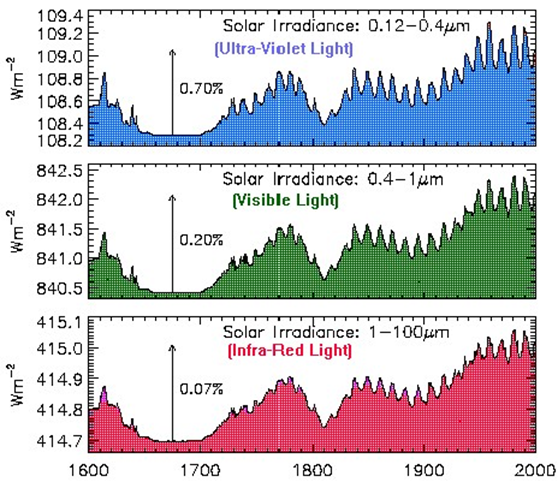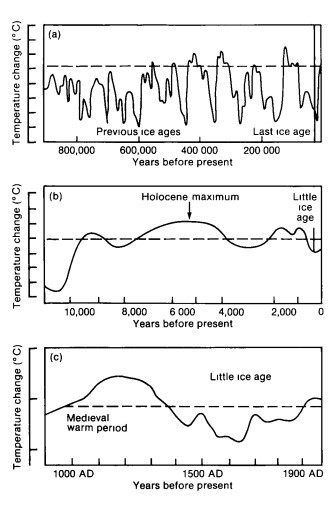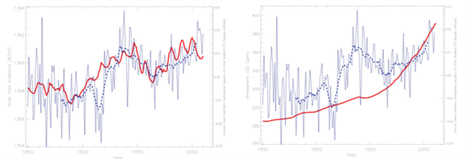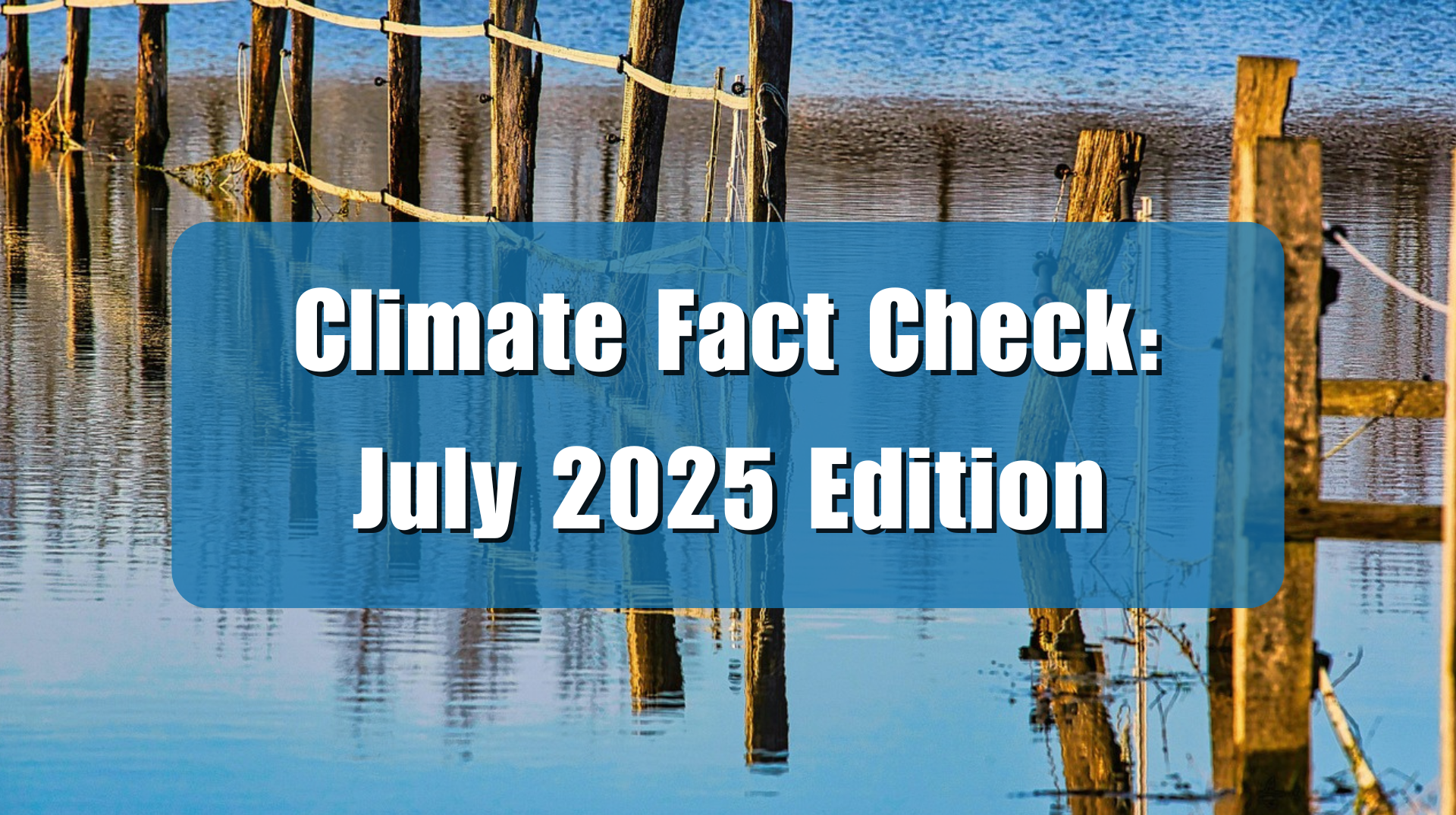USA Today published a supposed fact check claiming solar activity is not responsible for climate change. This is misleading at best, and foolishly wrong at worst. Various types of changes in solar activity have long been associated with changes in the Earth’s temperature and climate, on short, mid-term, and longer time scales.
The USA Today article by Kate S. Petersen, “The sun is mighty, but modern climate change is caused by human activity | Fact check,” presents itself as a fact check on a popular Facebook post. Wow! Responding to somebody’s certainly Facebook post is taking on hard hitting news from a reliable source! Still, when one examines the post, and compares it to the supposed fact check, the Facebook post is closer to the truth than Petersen’s and USA Today’s story.
“The implied claim is wrong,” Petersen writes. “While the sun significantly impacts Earth’s climate, it is not responsible for modern climate change.
“While the amount of solar energy striking the Earth fluctuates on an 11-year cycle, there hasn’t been a net increase since the 1950s, according to NASA,” Petersen continues. “However, global surface temperatures have risen dramatically.”
Petersen either is unaware of or simply ignored the fact that the 11-year solar cycles during which Sol’s magnetic fields flip are just one type of solar cycle that can drive temperature and climate changes on the earth. Sunspots and solar flares happen seemingly randomly though with some consistency, and 1,000 and 1,500 year cycles, and Milankovitch cycles also occur. All of these activities and others impact the Earth’s temperatures. As discussed at Climate at a Glance: The Sun’s Impact on Climate Change, historically through the present day, solar activity correlates quite well with climate change, better than changes in CO2. (see figures 1-3, below)



All the myriad ways solar activity impacts the Earth are not fully understood. Changes in solar output and their impact on solar winds are plausible explanations for temperature shifts on some time scales. Scientific research also suggests another type of forcing from the sun, its impact on volume of cosmic rays entering the earth’s atmosphere, which also impacts cloud formation and rainfall.
The point is, when Petersen and the government agencies she references state that the sun can’t be a factor in current climate change, they are only looking at one type of solar activity on a single time scale. Our solar system isn’t that simple.
To buttress her claim that the sun isn’t causing or significantly contributing to present climate change Petersen quotes Josh Willis, a NASA climate scientist, who told USA Today that “the amount of warming we see matches what we expect based on the increased CO2 we’ve added. The timing of the warming matches the timing of the CO2 increase caused by people.”
Willis’s claim doesn’t match the facts. The Earth began to warm in the mid- to late 19th century, before humans began emitting large significant amounts of CO2 into the atmosphere, then after the 1940s, even as global industrialization and anthropogenic CO2 emissions were increasing at a rapid pace, the earth began cooling, leading some scientists and media outlets by the 1970s to warn that an ice age might be coming. Then, the Earth started warming in the 1980s, only to plateau or pause for 15 years beginning in the late 1990s, despite CO2’s steady increase. There has, in fact, been no good correlation between CO2 concentrations and temperature changes throughout the latter 20th and early 21st centuries.
Also, as we’ve discussed dozens of times at Climate Realism, CO2 driven temperature changes projected by climate models don’t, in fact, accurately reflect recent warming trends. Ground-level temperature measurements, weather balloon temperature measurements, and satellite temperature measurements are far lower than model projections built on the assumption that CO2 is the prime forcing factor for global warming. As a result, Willis is simply wrong when he says, “the amount of warming we see matches what we expect based on the increased CO2 we’ve added.”
The physics and factors that drive the Earth’s climate conditions are many, varied, and complex. The Earth is not the simple linear system described in climate models and presented by Petersen and USA Today. Carbon dioxide is likely one factor influencing the recent modest warming, but the sun and numerous other factors are almost certainly having an impact as well—arguably playing role greater than the increase in greenhouse gases.






















